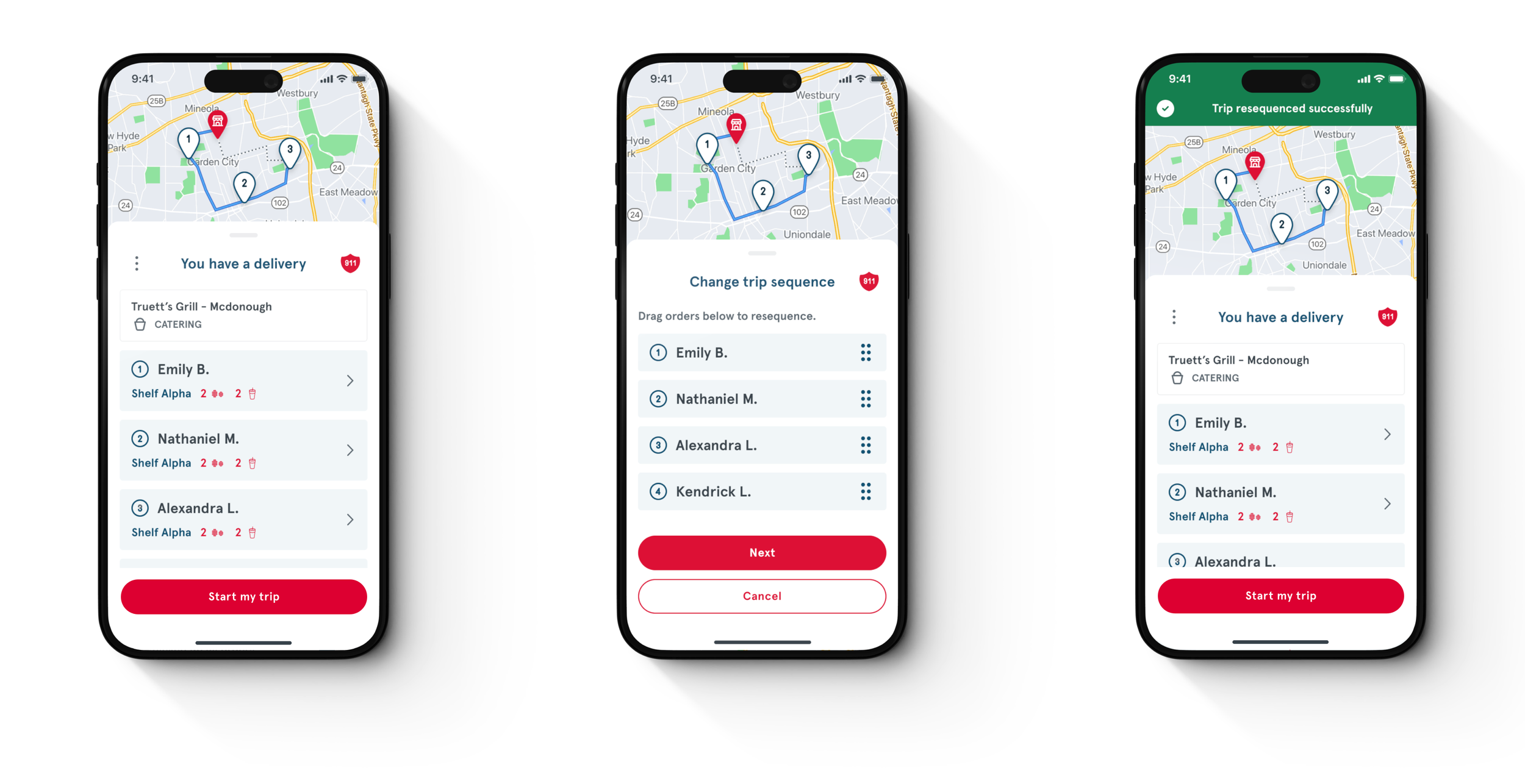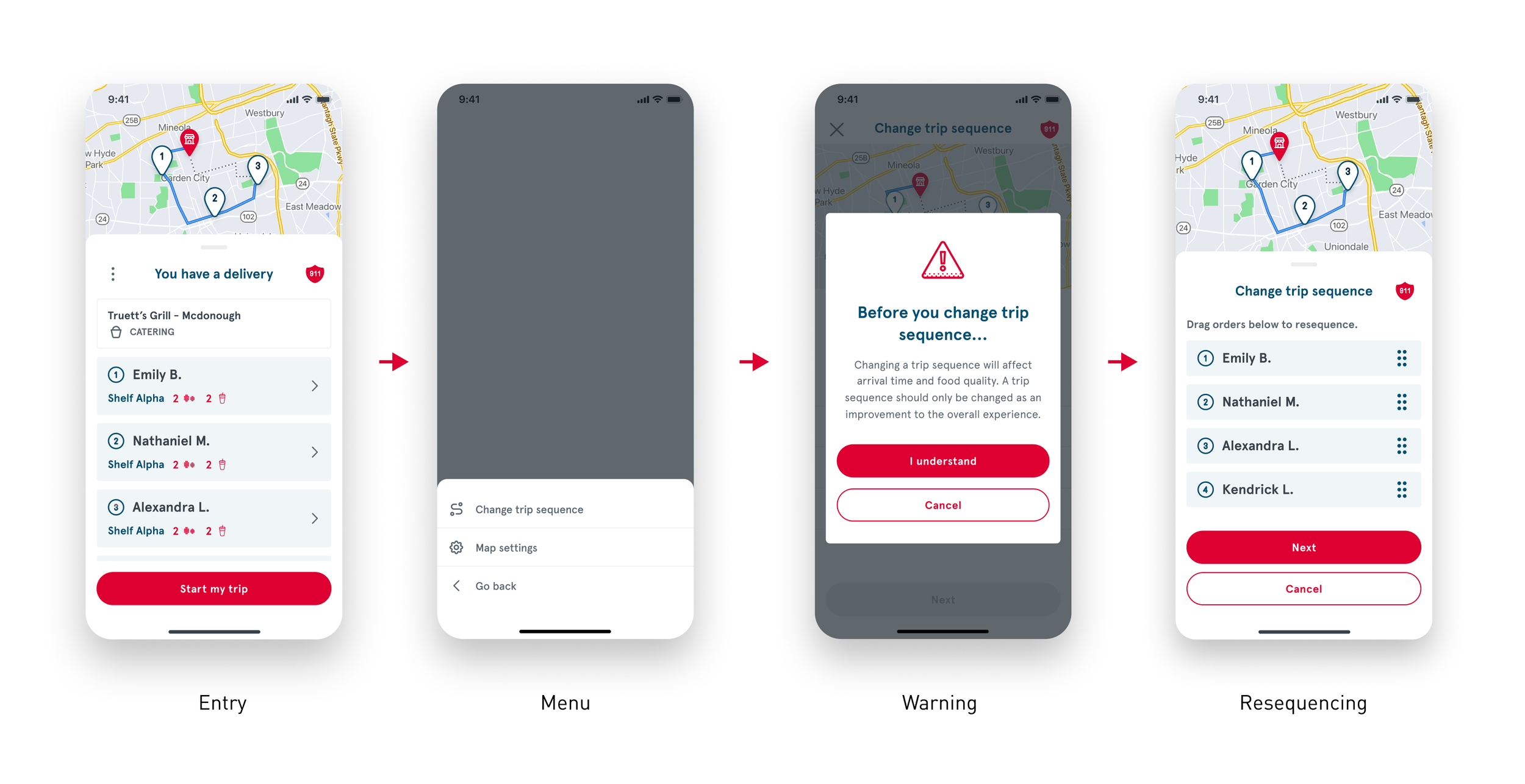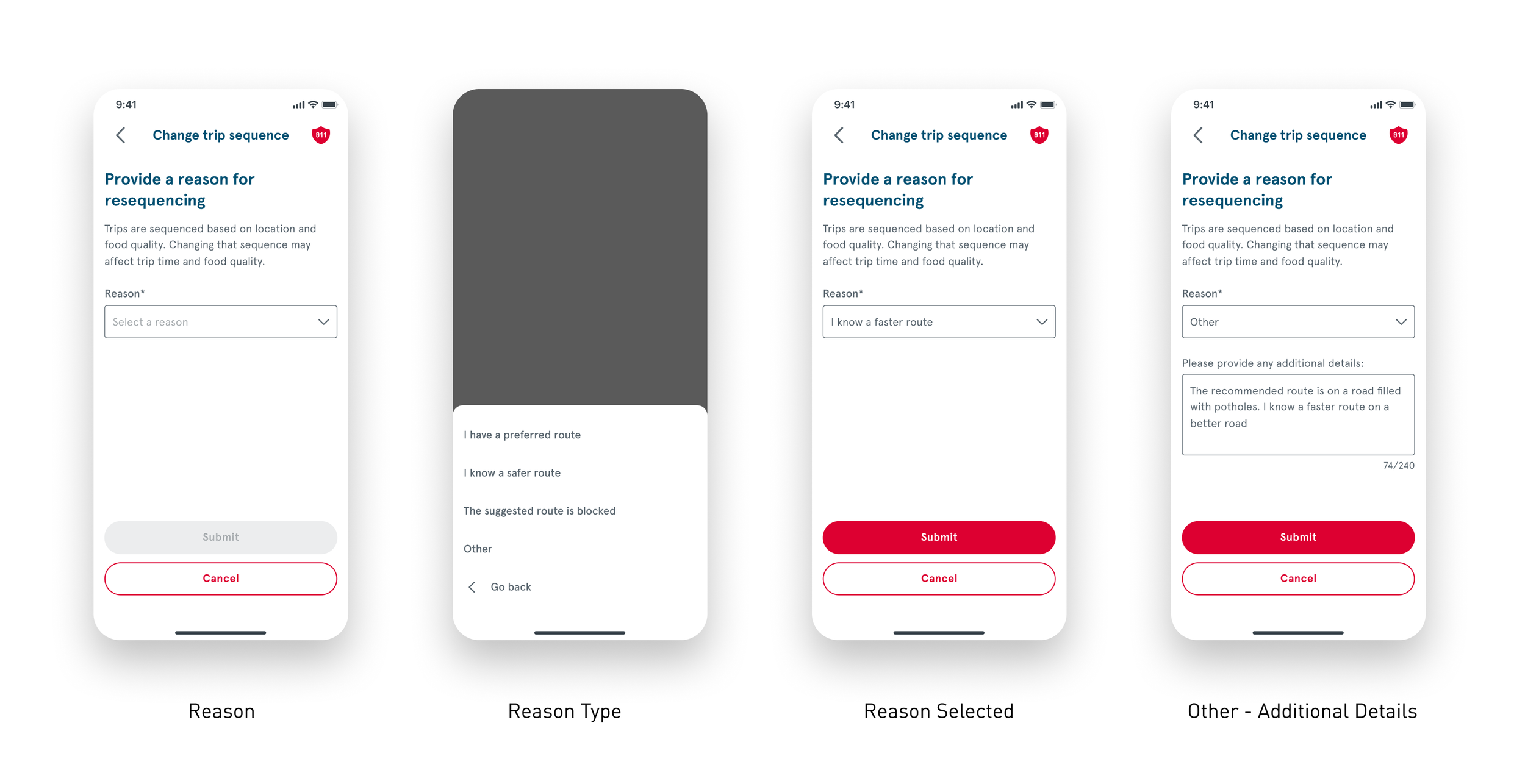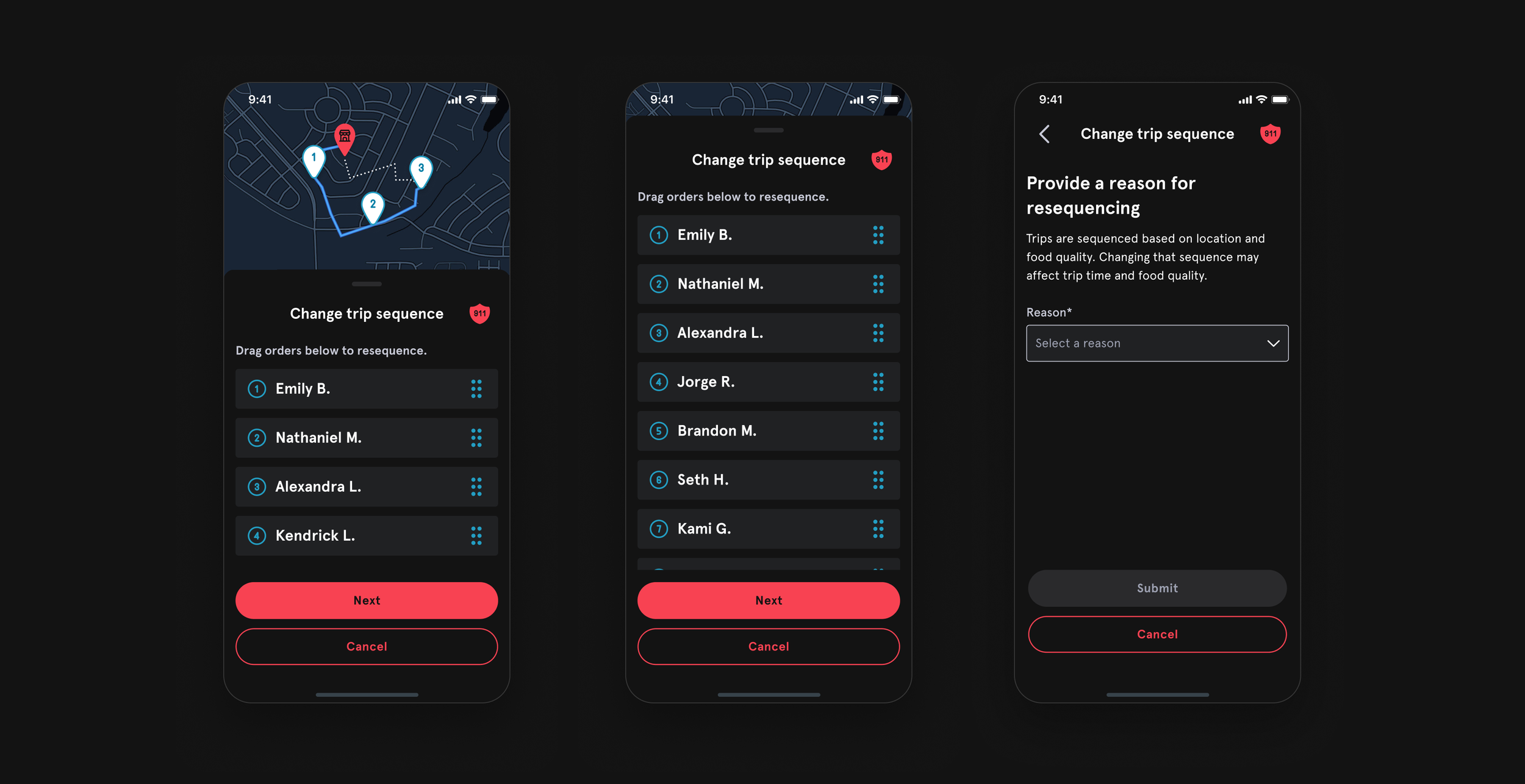
Description
Looking to optimize their delivery operations and improve driver experience, a major quick-service restaurant chain approached our team for a solution. As an operational tool, this resequencing feature needed to balance automated efficiency with driver autonomy across real-world scenarios. Through a comprehensive discovery and design process, I researched, designed, and validated our way to an intuitive solution that enhanced both driver satisfaction and delivery performance.
Phases & Methods
Discovery: Driver interviews, Dispatcher interviews, Stakeholder interviews, Competitive analysis
Research & Analysis: User journey mapping, Cross-platform ecosystem mapping, Technical feasibility assessment
Design: Mobile UI design, Cross-platform design system integration, Safety-first interaction design, Dark mode accessibility
Implementation: Developer collaboration, User story creation, Cross-functional team coordination
Validation: Stakeholder reviews, User Testing, Analytics setup and tracking
The Challenge
The restaurant's automated batching system optimized for technical factors, but drivers frequently deviated from suggested routes due to local knowledge and real-world conditions. This led to broken batches, out-of-order deliveries, and decreased downstream customer satisfaction.
Research & Insights
Creating a powerful experience for our users is paramount, so it was highly important to get their direct feedback for this feature. User interviews revealed that drivers needed flexibility for traffic avoidance and logical delivery patterns. Research also revealed the downstream implications for customers when their delivery time did not align with drop-off times.
Solution Design
Complete mapping of the user experience: Considering the user story, their needs, and potential edge-cases, a journey map was created outlining each step of the design and phases of the experience.
Drag-and-Drop Resequencing Interface: Designed with intuitive reordering with contextual warnings about food quality and delivery time impacts. Built using existing design system components for consistency and development efficiency.
Safety-First Approach: Multiple safeguards, including pre-trip warnings and reason tracking to prevent unsafe resequencing while gathering data for automation improvements.
Product analysis of Google Maps and Apple Maps informed familiar interaction patterns like drag-and-drop functionality.
Contextual Warnings: Food Quality
Reason Tracking
Dark Mode Design
A critical accessibility consideration was incorporating dark mode alongside the standard light interface. Given that drivers frequently work evening shifts and night deliveries, dark mode reduces eye strain and improves visibility in low-light conditions. The design respects user preferences by automatically aligning with their mobile OS settings while maintaining full feature parity across both modes.
Success Metrics
Implementation
Created comprehensive user flows and coordinated across iOS and Android dev teams. Collaborated with the development team for technical feasibility and post-launch analytics tracking. Gathered insights and presented design direction to client leadership.
Impact
Successfully balanced driver autonomy with operational efficiency while providing valuable data for future automation improvements. Established scalable cross-platform design patterns for the delivery ecosystem.






